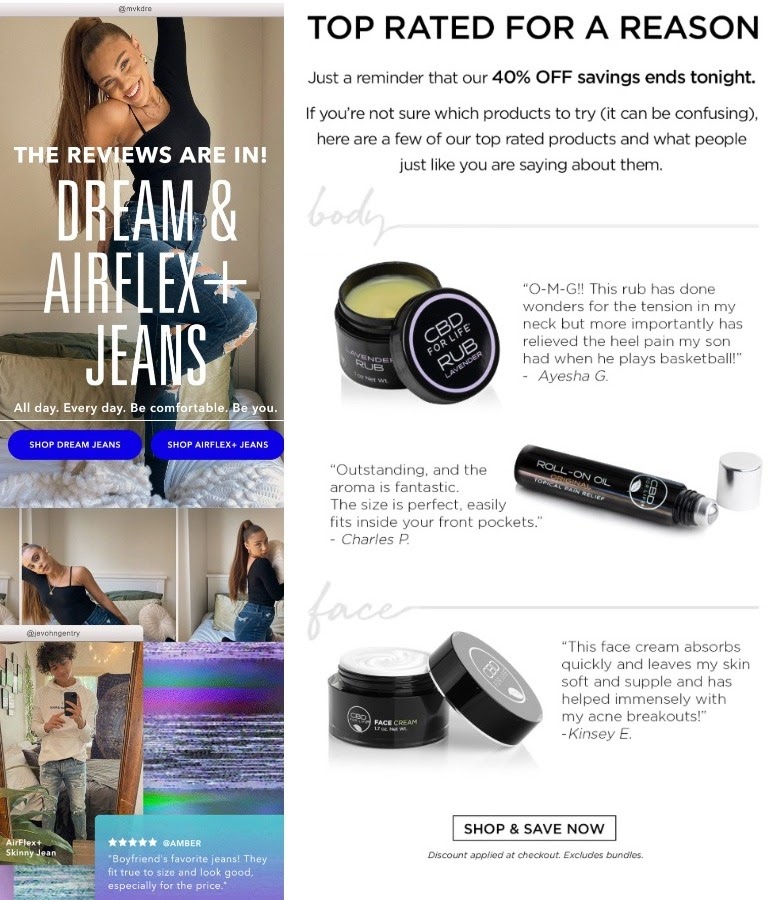
The Future of Marketing Automation: Main Email Trends 2020
By Iuliia Nesterenko
If you’re not involved in email marketing professionally, it may seem that this industry has stopped its progress long ago.
You open your inbox, open any email, and see the same picture: familiar layout, images, text, buttons.
Yes, the design and color palette differ; there are some new elements like CSS-animation or toggle switches. But in general, this is a good old email you received five years ago. Or is it?
Despite seeming visual stagnation, technologies behind email marketing have changed a lot. It has evolved from a piece of bulk standard advertising into a personalized communication solution that can be tailored to each recipient.

Numerous tools are responsible for such personalization – contact base segmentation, web tracking, API, smart blocks in email templates, dynamic content, AMP, SRT blocks, personalized product recommendations, machine learning algorithms, more precise analytics, more extensive data collection and analysis.
And their number will only as by far email remains one of the key channels for customer communication. Let’s see what email trends are expected to shape the industry in the upcoming years and how marketers can benefit from them.
AI-Supported Solutions
Artificial Intelligence has already become part of email marketing. Professional ESPs (email service providers) offer AI-based tools that can be adjusted to your particular brand and needs.
When configured properly, AI for email can improve the click rate and conversion rate of your campaigns by making them fit each recipient you send emails to.
Thus, machine algorithms can optimize content (display order and hierarchy, relevance, price) and sending (send time, annoyance level) for each subscriber based on their website behavior, response to messages, purchase history, social media activity, and so on.
As a result, people receive offers they’re currently most interested in, and your company gets better customer engagement and more sales.
However, as for now, AI requires manual adjustment on the part of your programmers and your provider’s team that takes time, effort, and resources.
Each algorithm is custom, and there is no ready code, scripts, blocks, etc. which you can simply add to your email template and assign to your website. This makes it hardly available for small brands that can’t afford specialists with required tech skills.
But I believe this is about to change. Email platforms are developing new strategies for AI implementation, making them easier to use for regular marketers.
We may expect to see a kind of library with ready AI-supported blocks that will be added to the email template like any other block without coding required.
All you’ll have to do (except for choosing the right service, of course) is to collect customer data and pass it to the system where it will be processed and used to make your campaigns as personalized as possible.
User-Generated Content
User-generated content is among the main email trends of 2020. Companies are trying to reconnect with their audience and win a new following, and UGC is the best way to generate engagement.
There are different types of UGC that can be integrated into emails, such as:
- images;
- reviews and feedback;
- challenges and hashtags; and
- expert opinion.
Alongside other benefits (original custom models and environment, free quality photos, brand advocating, active engagement beyond social media), user-generated content creates ideas for campaigns on its own.
That’s useful for companies that don’t run often sales, don’t have a blog (and therefore don’t send regular newsletters), or sell products or services that are rarely updated.
And since consistent campaigns are key for high deliverability, USG generates occasions to get in touch with your audience when you have no other ideas and don’t want to wait until Christmas or other big events.
What’s more, unlike some other email marketing techniques, UGC can be equally effective for both B2C and B2B. Reviews, testimonials, client feedback, expert opinion, and Q&A enable you to diversify often monotonous B2B emails and bring otherwise impersonal technologies closer to people.
With AMP and other email technologies on the rise, in the future, we can expect even more advanced interaction with UGC within the email body.
For example, images from social media would be inserted in emails in real time (depending on the open), and recipients can leave comments, shares and likes straight in the body without opening new windows with the corresponding media.
Customer Privacy
As you can conclude based on the above, companies will collect, store, and process more and more personal customer data and material. This would require new regulation protocols that would ensure their privacy and security.
The GDPR (General Data Protection Regulation) introduced in 2018 by European legislation was the first law that directly applied to email marketing and related processes.
It was followed by the CCPA (California Consumer Privacy Act) and LGPD (Lei Geral de Proteção de Dados), and more are expected to come. In general, their provisions coincide, but there are differences as well. Some are minor; some require more careful attention (like legal bases for processing).
Different or not, companies should comply with all of them to process data legitimately, and this puts certain challenges.
First, such laws are location-based, meaning you need to follow them even if only one of your customers resides on the given territory.
Second, there is no single legislation that regulates and empowers the provision, meaning you need to have different procedures to communicate with different authoritative bodies.
Third, your terms of use and cookie policy should include different positions of all laws and policies, which makes them voluminous and hard to digest.
As for now, no sign of legislative unanimity is happening. Marketers and legal teams should learn to adapt their customer policies to new laws and implement communication strategies to respond to customer requests and official requirements.
To sum up, email marketing is evolving as fast as other technologies. Trends appear and vanish every month, which means there are a lot of parties (email clients, service providers, email designers, brads) interested in its growth and development.
Not all innovations will take their place among the main marketing tools, but I recommend keeping an eye on AMP for email, SRT blocks, and dynamic content, and personalized recommendations and promo codes. Well, hear a lot about them in the future, make no mistake about it.

About the author: Iuliia Nesterenko is a technical writer at eSputnik. Her focus is on exploring current digital marketing trends and describing new strategies for email marketers.
Promoted
